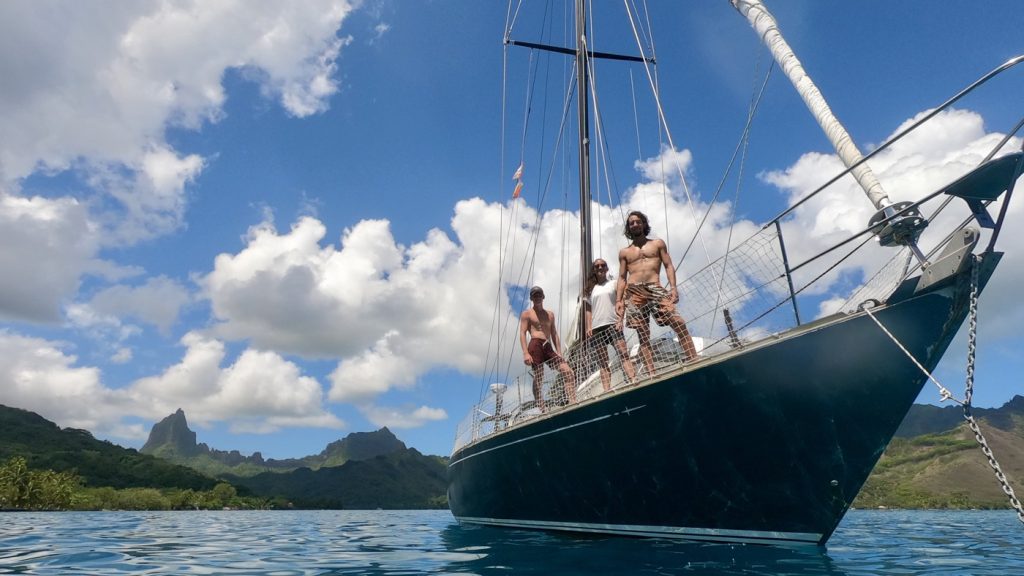The long way HOME | Baltic Yachts

Venus, launched in 1980, is hull number six in a series of 24 Baltic 51s produced between 1979 and 1988. One of her sisters, Skopbank of Finland, sailed in the 1981-82 Whitbread Round The World Race. Designed by Rob Ball at C&C in collaboration with Baltic Yachts’ own in-house design office, the 51 was one of the first yachts created by running performance studies on a computer for a range of hull shapes and appendages. She was thus far ahead of her time and is still a fast, powerful and extremely seaworthy ocean sailing yacht by today’s standards. The 51 is also notable for original interior design innovations by Tor Hinders, one of the founders of Baltic Yachts. She is the first sailing yacht to have an owner’s suite aft with a double bed directly underneath the cockpit, and she also has slanted bulkheads to optimise the use of interior living space.
It was a real leap of faith to buy a boat that he hadn’t even seen, let alone sailed, but for Axel it was the only way forward. With Covid travel restrictions it was impossible for him to go to Tahiti even if he quit his job. ‘And I knew if I left Canada I wouldn’t be able to come back,’ he says. ‘So everything was done via Zoom and online. ‘The funny thing – funny now, it wasn’t at the time – is that the same day we bought Venus, all flights to French Polynesia were cancelled for three months.’
It was also a daunting moment for the young skipper. ‘Even though I had experience on the Volvo Ocean boats I was never the captain,’ he says. ‘One of my first thoughts aboard Venus was wow, she’s big! I must admit I was asking myself am I really capable of doing this? For the first time everything was on my shoulders. Until then it was all dreams and talk, now it was suddenly real.’
Waking up on board for the first time, Axel and his crew were enormously relieved to see that Venus looked just as good in reality as she had seemed to be in the pictures they’d seen online. ‘She was in good condition but a lot of work had to be done because she hadn’t been sailing in three years,’ he says. ‘She was okay for daysailing but not for offshore, many things had to be replaced. But she was the one.’
By the time Axel and his delivery crew of four were finally able to reach Tahiti, which still wasn’t easy, there was no longer enough time to sail her back to Quebec via a normal trade wind route and then get her ready for the OGR. Their only chance of doing that was a very ambitious plan to set off immediately after their eight days of mandatory quarantine in Tahiti, sailing directly against the prevailing winds and currents: first to Panama via the Marquesas, then from Panama to the Bahamas, north from there to Halifax and finally to Quebec via the Gulf of St Lawrence.
Time was still very tight with just five months to complete all four legs of the voyage and it would, Axel warned his crew, be hard and uncomfortable sailing nearly all the way. ‘When we arrived it was one o’clock in the morning,’ he says. ‘Standing in front of Venus, jet lagged, I thought this can’t be possible. Stepping on board it was wow, the journey has just started. This is a once in a lifetime moment. Everything we’ve been working on for the last year, it’s really starting now.’
